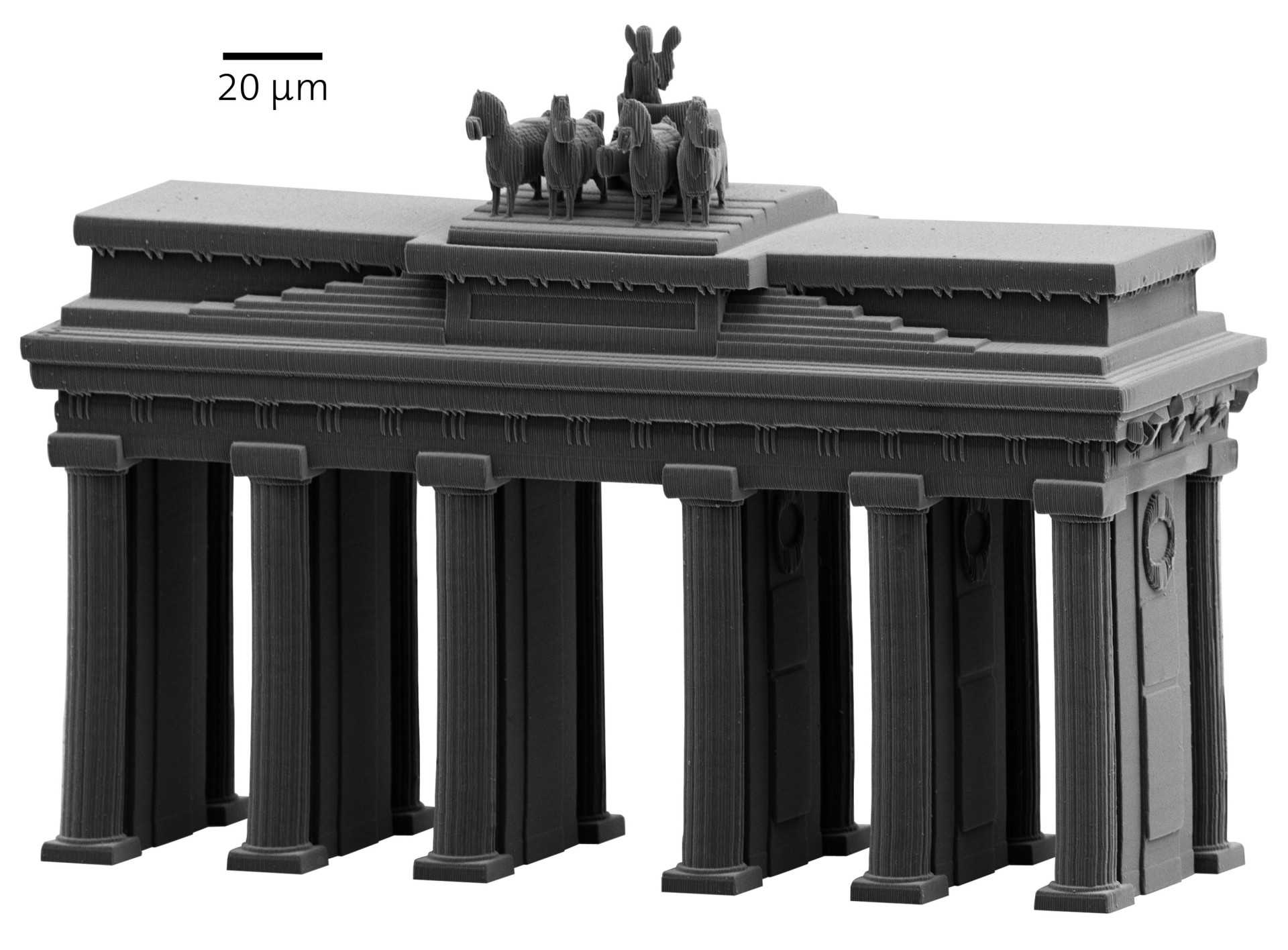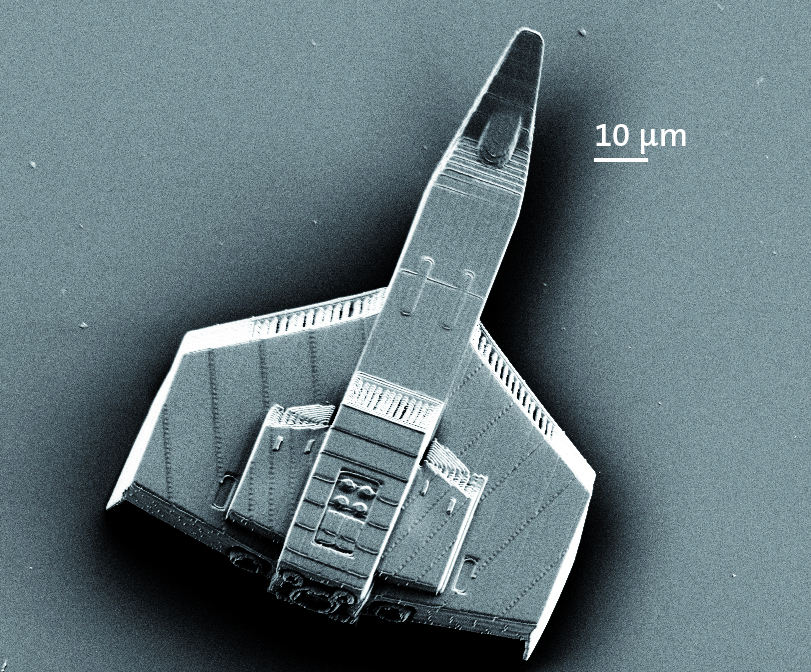Germany (Karlsruhe)
Today some of the most advanced 3D printing techniques in the world are being developed by German company Nanoscribe, who are printing complex structures that are even smaller than the width of a human hair. This ability to print almost anything you can think of – no matter how miniscule or complex – enables the fabrication of tiny microchips and even the smallest parts of a 3D printer itself.
3D printing was developed by Emanuel Sachs at the Massachusetts Institute of Technology in the late 1980s. The technology uses additive manufacturing which works by following a digital design or ‘blueprint’ to build up material layer by layer until it solidifies into a 3D object. When done on this small scale, Nanoscribe’s microprinting uses two-photon polymerisation, a combination of photo-sensitive materials, UV-light and ultrashort pulse laser.
Nanoscribe is receiving high praise for its achievements, in 2014 winning the Prism Award in San Francisco, known as the ‘Oscar of Photonics’. Nanoprinting technology even enables the ‘bioprinting’ of human cell scaffolds, paving the way for key developments in tissue-engineering.
Nanoscribe was mapped by author and futurologist Mark Stevenson in his AtlasChart Top 5 – coming soon. Read his full FutureHero interview here.
Project leader
Martin Hermatschweiler, CEO
Support the Atlas
We want the Atlas of the Future media platform and our event to be available to everybody, everywhere for free – always. Fancy helping us spread stories of hope and optimism to create a better tomorrow? For those able, we'd be grateful for any donation.
- Please support the Atlas here
- Thank you!

Photonic Professional GT

The Brandenburg Gate

A miniature space ship

